Are you planning to ride your first Medium test? Whether you’re working towards competing when live competitions resume or have entered one of Equestrian Life’s virtual competitions, these tips are for you!
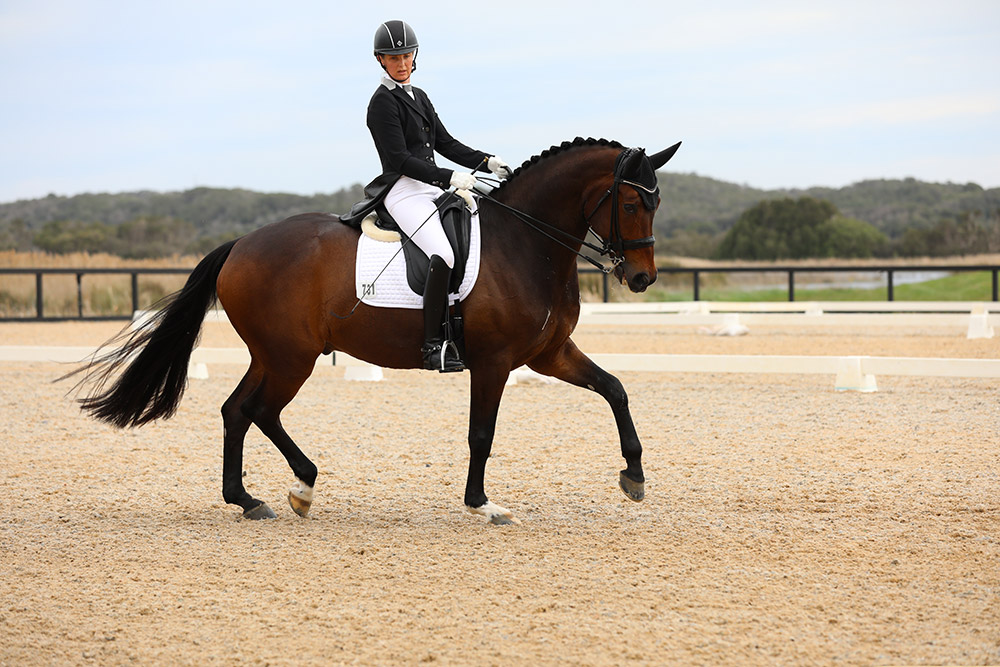
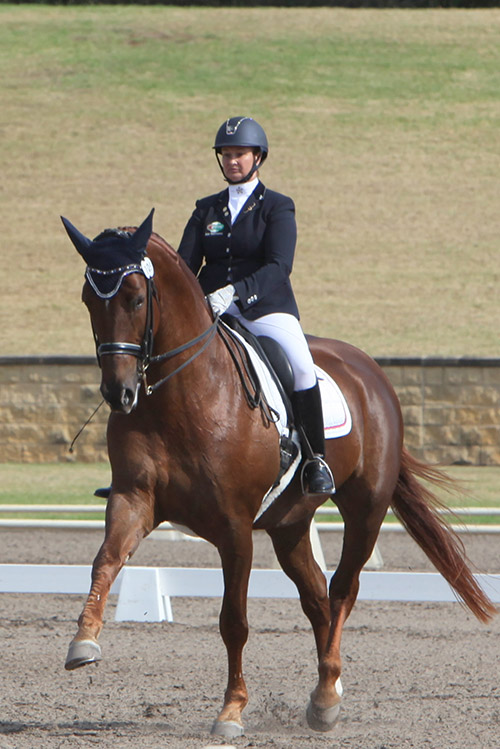
“Make certain that you don’t
over-ride and extend the frame.”
There are three Equestrian Australia (EA) Medium level tests — Medium 4A, 4B and 4C. The purpose of this level is to confirm that the horse demonstrates correct basics and, having begun to develop an uphill balance at Elementary, now demonstrates increased engagement, especially in the extended paces.
In addition, transitions between collected, medium and extended gaits should be well defined and performed with engagement. The horse should be reliably on the bit and show a greater degree of straightness, bending, suppleness, throughness, balance and self-carriage than at Elementary Level.
We catch up with our resident FEI rider, coach and virtual competition judge, Roger Fizhardinge, to see what other tips he has for riding a great Medium level test…
1. The overall outline needs to be uphill and engaged
As outlined in the test directives, the Medium level horse needs to start showing increased engagement and a greater degree of straightness, suppleness, throughness and balance.
“The feeling with the Medium horses is that they are beginning to feel ready for Advanced and Prix St Georges,” explains Roger. “The horse should remain more uphill now, and should show better flexibility and equality of flexion left and right. It should also be very quick off the leg in forward transitions and collected transitions.”
2. The choice between a snaffle or double bridle depends on the horse
“At Medium level it is totally up to the rider whether to choose a snaffle or double bridle,” says Roger. “Providing you select the option that best suits the horse, the bit choice itself has little bearing on the scores at this level.”
That said, Roger points out that if using the double bridle, it must be used correctly. “The double should not be used with the intention of pulling the horse’s head in or making it look shorter and more collected. An observant judge will notice whether the double bridle is being used in the correct way or not. If the double bridle seems to be trying to pull the horse’s head in instead of riding it forward to the bit and making it round through a yielding poll, well then you’ll certainly lose marks.”
3. Show very clear transitions between the collected, medium and extended paces
Medium level introduces the extended walk, trot and canter, and as Roger explains, “You want to see very clear differences between the collected pace, the medium pace and the extended pace, and that goes with walk trot and canter.
“For example, the extended trot has got to be more forward and have more over-track and more expression than the medium trot.”
4. Maintain that uphill feeling in the extended trot and canter
Keeping horses uphill in the extended paces is easier said than done, especially towards the end of the test when they may be getting a little bit tired — however, as Roger explains, it’s important!
“Make certain that you don’t over-ride and extend the frame to an extent that will create a loss of balance, with the horse tending to fall over the shoulders. You must keep the weight back on the hind legs and have a feeling of the forehand being up and out in front of you. The poll and the neck should still be arched and well rounded, with the nose in front of the vertical, but not too far in front of the vertical. The big thing is to not let them get downhill; they must even have a bigger feeling of uphill in the extended places.”
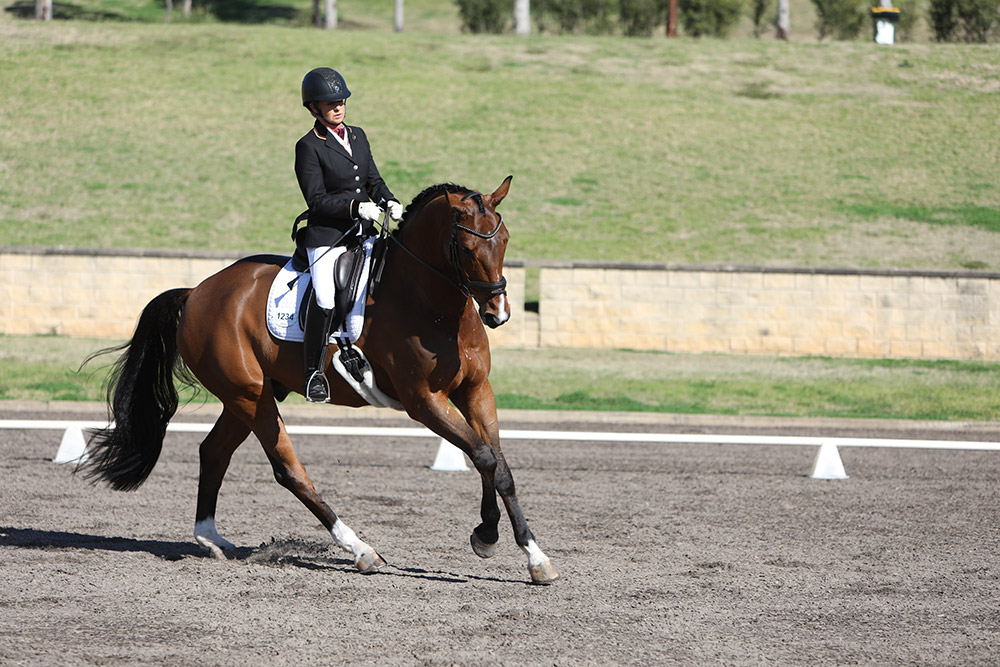
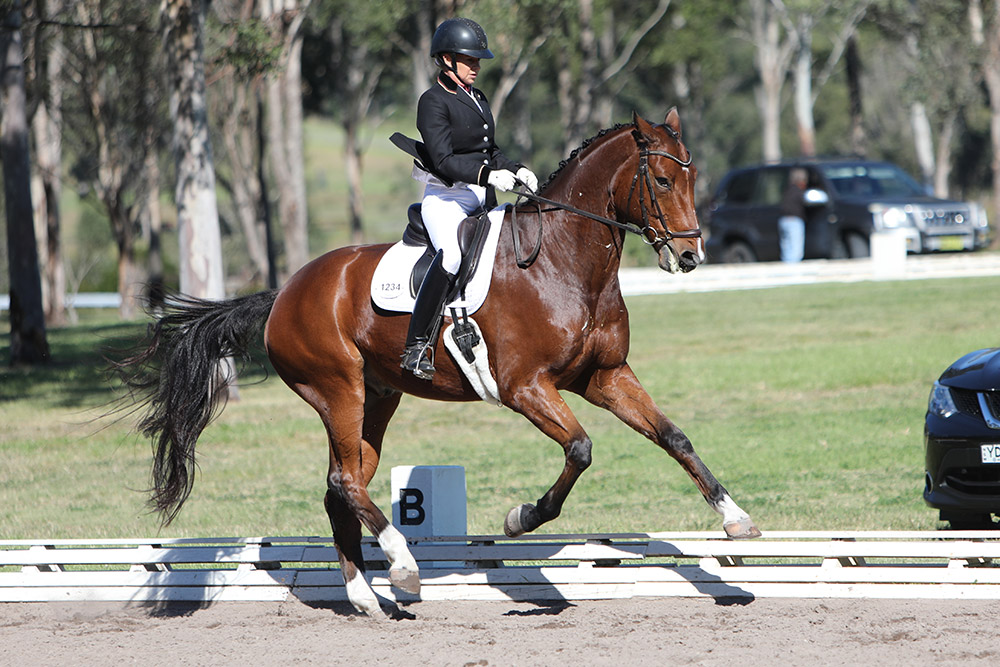
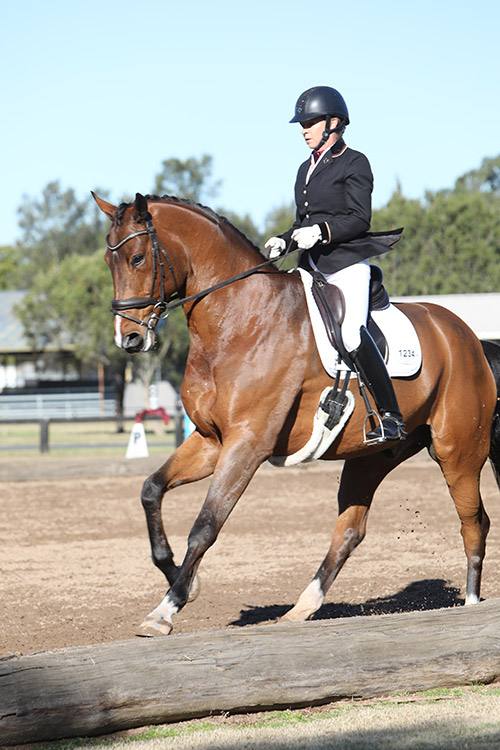
“The half-pass is not such a
complicated exercise but it
is often made hard.”
5. Understand the differences in the walk paces
Extended walk is a very important mark often associated with the coefficient mark, so it’s crucial to ride it well.
“The extended walk, like the extended trot, must cover the maximum amount of ground possible, so there must be a good over-track,” says Roger. “Some horses are naturally talented with a good over-track and some aren’t. So for those that don’t have the most amazing over-track, it’s important to fulfil the other criteria of the extended walk, which includes the frame outline. The horse’s poll should be about level with the wither with the nose in front of the vertical, and it should show very positive steps that are really forward thinking to the hand… and it should have a lot of purpose.”
It’s important to differentiate between free walk on a long rein and extended walk. “It’s not like the long-rein walk,’ says Roger. “It’s not long and down and relaxed; it’s actually still on the bit with a maximum length of stride.
“The transitions between medium and extended walk are also very important because they show adjustability, and show the confidence between the horse and rider as far as collecting the walk. The steps must shortened in the medium walk, not just the frame! The transitions within the pace must be positive, purposeful and immediately from one to the other.”
6. Understand the mechanics of the half-pass and renvers
Half-pass and renvers are the lateral movements that are added once you reach Medium level. It’s important to understand the mechanics of these movements to ride them accurately, and then it’s all about keeping the same cadence, rhythm and tempo as you would have in the collected trot.
“Renvers is an exercise that needs to be originally introduced into the training by finishing a half-pass with the quarters leading, so when you get to the track the quarters are on the track and the forehand off the track,” says Roger.
“For example, ride the centreline, half-pass left to the long side, quarters on the wall; as you reach the wall keep the forehand off the wall but still in the left flexion. In the Medium test, it goes from shoulder-in to renvers. It’s not a particularly easy exercise, but once you get the feeling of the renvers — that is, quarters on the wall, forehand off the wall, with the flexion towards the wall — from the shoulder-in right to renvers left is a matter of feeling your aids towards the half-pass/renvers feeling and simply moving the body position while keeping the same angle in the horse. It’s very important to make the suppleness obvious and the change of bending obvious while not changing the tempo of the trot.
“The half-pass is not such a complicated exercise but it is often made hard. However, it is simply travers on the diagonal line with the quarters a little bit more parallel. To me, the easiest way to ride a half-pass from one marker to the other is to make a line with your eye from, say, the centreline to E or B. And then, as if there’s actually a line on the ground, keep the horse’s front legs a tiny bit behind that line and think of travers.
“The rhythm and the cadence and the tempo in the half-pass and renvers should be exactly the same as for the shoulder-in and the collected trot.”
7. Walk pirouettes require lots of practice
They may look simple, but as Roger explains, the walk pirouettes are actually where many people lose a lot of marks. “The walk pirouette is similar to the turn on the haunches, but the hind legs mark time. It’s important to keep inside flexion, quarters are not to step out, hind legs should mark time and the forehand should turn around the back end. It’s a movement that needs a lot of practice. People lose a lot of marks in walk pirouettes!”

“It’s an exercise that
needs to be very, very well
prepared at home.”
8. Give towards the ears when releasing the reins in canter
The release of reins on the 20-metre circle in canter is part of the B test, and the judges want to see the horse stay in exactly the same frame and balance.
“The horse shouldn’t get faster or slower or change its shape,” says Roger. “Make certain the horse is well away from the inside leg on the circle — almost a feeling of leg-yield so it stays easily in balance. Make certain the horse doesn’t go any more forward and stays in exactly the same frame.
“When you give the reins, I prefer to see the rein given towards the horse’s ears, rather than straight down towards the bit, as the contact becomes very insecure and jerky as you pick it up and release it. So it’s more like a softer giving towards the ears. It’s an exercise that needs plenty of practise as well.”
9. It’s all about clean flying changes
Medium level is where flying changes are introduced, and this is often a stumbling block for some horses when it comes to moving up the levels. “I’m sure horses are either born to do flying changes or not!” says Roger.
“The number one thing is to get a clean change from left to right and right to left. In other words, the hind legs change and then the front legs follow straight away. And it needs to be ridden as straight as you possibly can. In addition, the canter before the change and after the change should be the same speed; the horses shouldn’t take off after the flying change. That is a common fault.
“Of course, to get a good mark for a flying change you need to also have good balance, good straightness and the horse should not be croup high. To help achieve balance, always make certain that the horse has a balance towards the new direction before initiating the change. So when they land on the new leg, they are already balanced for that direction.”
When it comes to flying changes, Roger explains that it all comes down to practising. “It’s an exercise that needs to be very, very well prepared at home. Horses can become quite tense about flying changes. They can want to run away with flying changes. There are many, many different resistances that can occur and may need to be worked through.”
10. Rein-back to trot requires the horse to be sharp off the leg
As Roger explained in the September issue when discussing the Elementary tests, a good rein-back begins with establishing a square halt. “This requires a very good collected trot, and very short steps into a halt that stays immobile and up in the poll, not dropping the poll and getting low. The rein-back needs to be the right number of steps described in the test and each step is counted as a front leg hits the ground.
However, unlike the Elementary tests, the horse is required to transition straight to trot from the rein-back, rather than walk.
“Rein-back and trot, both being two-beat movements in diagonal pairs, is not such a hard transition for the horse to make. But it’s not well done because riders don’t make the horses sharp enough to the leg in the upward transition. So you must practise a lot, rein-back to trot. Everyone practises rein-back to walk, so when rein-back to trot comes into the equation it’s often not well understood by the horse.
“Don’t let the horse tip forward and get the poll down and low in the upward transition; it must initiate from the backend and they must be very sharp from your leg. It should be clear and crisp!”
As always, finish your tests with a positive attitude — no one has ever lost marks for a smile!
Equestrian Australia Medium tests:
Riding the Preliminary, Novice or Elementary tests? Roger has covered these in our previous issues:
10 Tips for Riding the Preliminary Tests
10 Tips for Riding the Novice Tests
10 Tips for Riding the Elementary Tests EQ
YOU MIGHT ALSO LIKE TO READ:
Courageous Kiwi blazes her own trail (Part 3) (In this issue – Also by Roger Fitzhardinge)

